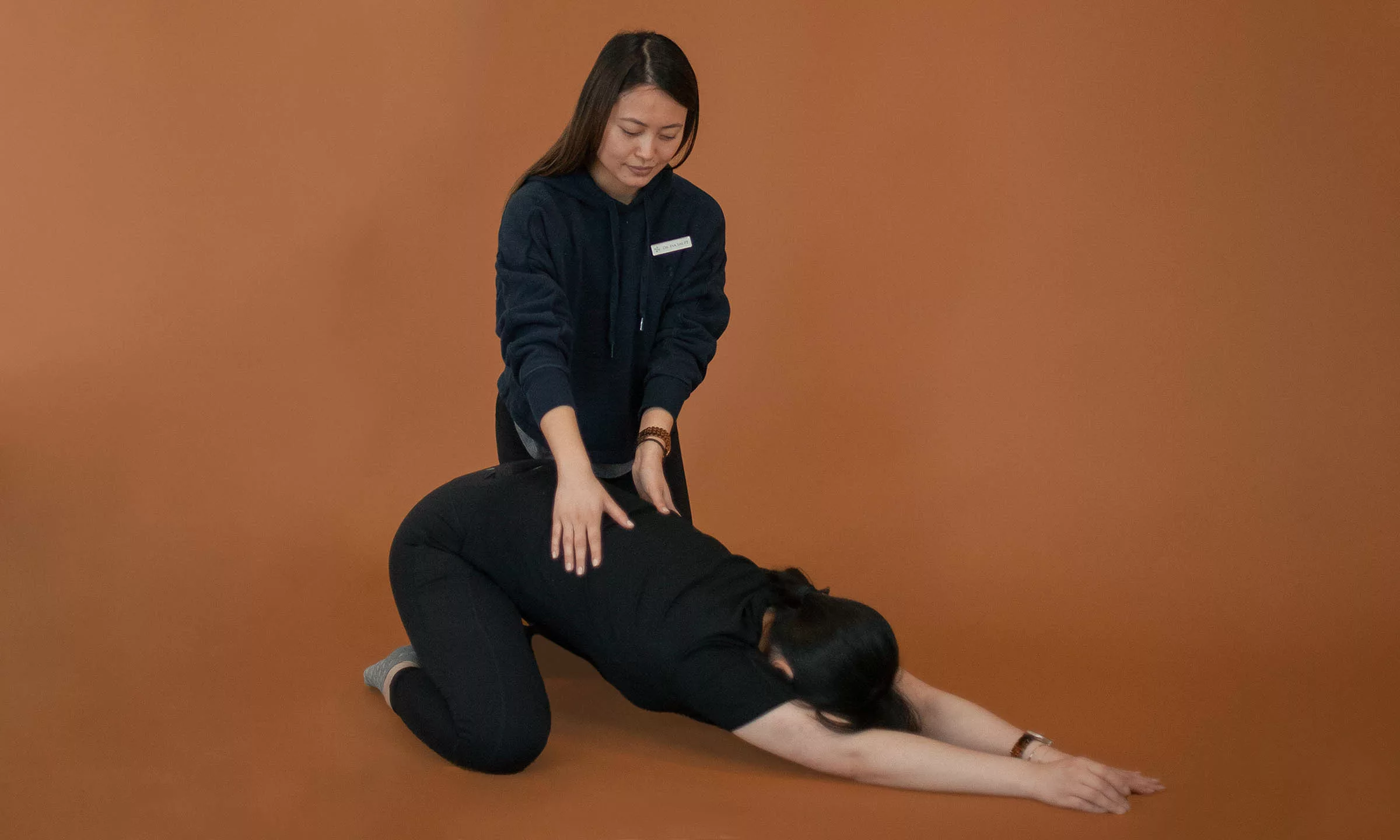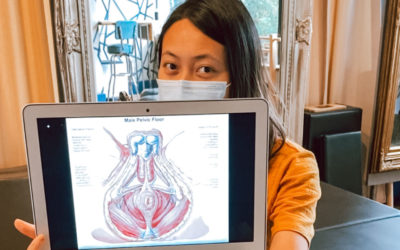
Pelvic Floor Physical Therapy (conditions it supports):
- Urinary + Bowel Incontinence
- Pelvic Pain + Weakness
- Prolapse + Pelvic Organ Descent
- Postpartum Pelvic Floor Neuromuscular Re-Education
- Female Sexual Dysfunction
- Diastasis Recti Abdominis
- Posture Re-Education
Pelvic Floor Therapy for women and men is offered at Physio Logic. This includes the treatment of pelvic dysfunctions through the rehabilitation of the many muscles, ligaments, and nerves within the pelvis. These conditions can range from minor to severe. Common concerns include pain, urinary and bowel incontinence.
Postpartum Pain And Weakness
One of the most treated conditions within physical therapy practice is postpartum pain and weakness. After enduring the athletic event of childbirth (both vaginal and cesarean delivery), one’s body might not feel back to “normal” after six weeks of healing. Injuries sustained during labor and delivery can leave a lasting impact; such as painful scarring and an overall feeling of weakness. Other after-effects can include organ prolapse, nerve entrapments, and reduced sensation/inability to achieve orgasm.
Women who deliver via cesarean section also experience dysfunction secondary to load sustained by the pelvic floor to accommodate the growing baby for 40 weeks. The uterus can weigh up to 15x more, not including the weight of the baby. It can also hold up to 500x more, putting a large demand on these tiny muscles and ligaments to maintain the support. Cesarean section scarring can lead to lower back pain and increased tension across the anterior pelvis, creating difficulty with proper abdominal engagement.
Physio Logic’s prenatal and postpartum physical therapists recommend that all post-partum women (both vaginal delivery and c-section delivery) do at least one PT visit to learn how to better facilitate their pelvic floor muscles. The pelvic floor muscles are put under a ton of stress to support the growing fetus and uterus throughout 40 weeks of pregnancy and deserve some attention to fully recover.
Urinary And Bowel Incontinence
Urinary and bowel incontinence (ranging from mild leaking while exercising to full loss of control) is a widespread concern affecting both men and women across the lifespan. Incontinence products line entire aisles of drug stores, making it a huge industry. Pelvic floor physical therapy addresses the exact muscles that control our sphincters, improving one’s control and reducing or eliminating incontinence. Treatments include strengthening (Kegels exercises- specific to each individual) as well as behavioral approaches.
Female Sexual Dysfunction
Hypertonic pelvic floor muscles and scarring can lead to pain. Dyspareunia (painful intercourse) can be addressed with pelvic floor PT, as well as the inability to tolerate tampons, and GYN exams. Scar mobilizations and trigger point release with gentle stretching help reduce tension in the tissue. These clients are instructed to avoid Kegels and work on downtraining their muscles to reduce tension and pain.
Male Dysfunction
There are many factors that play into pelvic floor pain and dysfunction. Physiological (nerves, muscle, fascia, circulation), psychological, and social factors need to be addressed and pelvic floor physical therapy can play an important role in your overall care. Causes can include infection, trauma, repeated compression, central and peripheral sensitization, bony misalignment, pelvic floor overactivity, or under activity. There may also be complaints of bowel and bladder symptoms. Treatment varies based on what the root of the dysfunction is, and doing the wrong exercises, such as Kegels or pelvic floor muscle training, when you have an overactive pelvic floor can worsen symptoms. This is why assessment and a treatment plan from a trained pelvic floor physical therapist is important. Treatment can include manual therapy, postural re-education, motor control training, movement training, patient education, bowel or bladder training, and activity modification.
Pelvic Floor Muscles And Their Functions
The pelvic floor muscles function to support the organs, control the sphincters, and are also responsible for sexual function. They deserve some attention and fine-tuning when there is a problem. Pelvic floor muscles are a group of muscles located on the lowest aspect of the pelvis, the bottom of the core. They consist of 3 layers of muscles running from the pubic bone in the front to the SIT bones and coccyx posteriorly. The pelvic floor muscles synchronize with other core muscles to stabilize the pelvis and lumbar spine, reducing the load to the surrounding joints.
Pelvic Floor Therapy what to expect
The physical therapy evaluation consists of a typical orthopedic assessment of the pelvis and lumbar spine. It also includes an internal pelvic floor muscle assessment. This can give information regarding muscle tone, weakness, and painful trigger points or scarring. Once a diagnosis is reached, an appropriate rehabilitation program will be initiated. If patients are experiencing any pain, incontinence, sexual dysfunction, or simply have a question; they should seek help from a PT or MD.
MEET YOUR PELVIC FLOOR SPECIALISTS

Dr. Tanuj Palvia, MD
Board Certified in Pain Management and Anesthesiology
Read More on Pelvic Floor Therapy
Empowering Women’s Health: Essential Protocols for Pregnancy and Beyond
As women, our bodies undergo remarkable...
Pelvic Floor Therapy for Women
Pelvic floor rehabilitation is a form of physical...
Pelvic Floor Therapy for Men
Did you know that women are not the only ones...
FREQUENTLY ASKED QUESTIONS
What Is Pelvic Floor Therapy?
Pelvic floor therapy in Brooklyn is a specialized type of physical therapy that concentrates on strengthening and rehabilitating the muscles in the pelvic floor. It can help address various pelvic floor issues and can benefit both men and women suffering from issues that stem from the pelvis in the Brooklyn area.
Pelvic Floor Therapy: What To Expect?
When undergoing pelvic floor therapy in Brooklyn, you will receive a customized evaluation and treatment plan designed to meet your individual needs. The therapist will guide you through exercises, modalities, techniques, and possibly the use of biofeedback to improve pelvic floor function and address your concerns and set up a plan that is individualized.
How Does Pelvic Floor Therapy Work?
Pelvic floor therapy in Brooklyn typically involves a combination of exercises, stretches, manual techniques, and biofeedback to target and strengthen the pelvic floor muscles. The therapist will work with you to assist and improve muscle coordination, alleviate pain, and address any other pelvic floor dysfunctions specific to your condition.
Is Pelvic Floor Physical Therapy Worth It?
Yes, pelvic floor physical therapy is worth it in Brooklyn for individuals experiencing pelvic floor issues. It offers non-invasive, evidence-based approaches to improve symptoms a patient may be suffering from and enhance overall pelvic health issues for residents in the Brooklyn area.
What Is The Best Therapy For The Pelvic Floor?
Pelvic floor physical therapy is highly regarded as an effective treatment option for pelvic floor issues in Brooklyn. With its specialized approach to focus on every individual needs, it provides effective management and rehabilitation of various pelvic floor dysfunctions for residents in the Brooklyn area.


